St. Dorothy of Montau
புனித_டோரத்தி (1347-1394)
அக்டோபர் 30
இவர் (#Dorothy_Of_Montau) ஜெர்மனியில் உள்ள ஒரு விவசாயக் குடும்பத்தில் பிறந்தவர்.
இவருக்கு ஏழு வயது நடந்துகொண்டிருக்கும்போது ஏற்பட்ட இறையனுபவம், இவரை இறைவன்மீது பற்றுக் கொள்ளச் செய்தது. இதன்பிறகு இவர் இறைவேண்டலுக்கு மிகுந்த முக்கியத்துவம் கொடுத்து வாழ்ந்து வந்தார்.
இவர் திருமண வயதை அடைந்தபொழுது ஆல்பிரக்ட் என்றொரு செல்வந்தருக்கு மணமுடித்துக் கொடுக்கப்பட்டார். அவர் இவரைக் கடுமையாகச் சித்திரவதை செய்தார். இதனால் இவருடைய இல்லற வாழ்க்கை மிகவும் துன்பம் நிறைந்ததாக இருந்தது.
ஒருபக்கம் தன் கணவர் தன்னைச் சித்திரவதை செய்து வந்தாலும், இன்னொரு பக்கம் இவர் அவருக்காக இறைவனிடம் தொடர்ந்து மன்றாடினார். ஒருகட்டத்தில் அவர் மனம்மாறி இவரை அன்பு செய்யத் தொடங்கினார். இதற்குப் பிறகு இவர்களுக்கு இறைவன் ஒன்பது குழந்தைகளைக் கொடுத்து, அருள்பாலித்தார்.
ஒருமுறை இவர் உரோமைக்குப் புனித பயணம் மேற்கொண்டார். அவ்வாறு இவர் உரோமைக்குச் சென்றுவிட்டுத் திரும்பி வந்தபொழுது இவரது கணவர் இறந்திருந்தார். எனவே இவர் பிள்ளைகளுக்குச் செய்யவேண்டியதைச் செய்துவிட்டு, மேரியன்வார்டர் என்ற இடத்தில் இருந்த துறவு மடத்தில் சேர்ந்து துறவியாக வாழ்ந்தார்.
துறவு மடத்தில் இருந்த நாள்களில் இவர் நிறைய காட்சிகளைக் கண்டார். அக்காட்சிகள் இவரை இறைவன் மீது ஆழமான நம்பிக்கை கொள்ள வைத்தன.
இவர் 1394 ஆம் ஆண்டு இறையடி சேர்ந்தார். இவர் மணப்பெண்கள், கைம்பெண்கள் ஆகியோருக்குப் பாதுகாவலராக இருக்கின்றார்.
Feastday: October 30
Patron: of formerly Prussia, Monastic state of the Teutonic Knights, brides, widows, & parents of large families
Death: 1394
Born 6 February 1347
Groß Montau, Prussia (Mątowy Wielkie)
Died 25 June 1394
Kwidzyn
Venerated in Roman Catholic Church
Beatified 9 January 1976, Dhaka, Bangladesh
Canonized 9 July 1976, Apostolic Palace, Vatican City by Pope Paul VI
Major shrine Our Lady, Ark of The Covenant Parish Church, Davao City, Davao
Feast 25 June 30 October
Patronage formerly Prussia
Monastic state of the Teutonic Knights
brides
widows
parents of large families
Widow and hermitess. She was born a peasant on February 6, 1347, in Montau, Prussia. After marrying a wealthy swordsmith, Albrecht of Danzig, Poland, she bore him nine children and changed his gruff character. He even accompanied her on pilgrimages. However, when she went to Rome in 1390, Albrecht remained at home and died during her absence. A year later Dorothy moved to Marienswerder, where she became a hermitess. She had visions and spiritual gifts. Dorothy died on June 25 and is the patroness of Prussia. She was never formally canonized.
Dorothea (or Dorothy) of Montau (German: Dorothea von Montau; Polish: Dorota z Mątowów) (6 February 1347 – 25 June 1394) was an anchoress and visionary of 14th century Prussia. After centuries of veneration in Central Europe, she was canonized in 1976.
St. Alphonsus Rodriguez
புனிதர் அல்ஃபோன்ஸஸ் ரொட்ரிகஸ்
ஸ்பேனிஷ் இயேசுசபை பொதுநிலை சகோதரர்:
(Spanish Jesuit Lay Brother)
பிறப்பு: ஜூலை 25, 1532
செகோவியா, ஸ்பெயின்
(Segovia, Spain)
இறப்பு: அக்டோபர் 31, 1617 (வயது 85)
பல்மா, மஜோர்கா, ஸ்பெயின்
(Palma, Majorca, Spain)
ஏற்கும் சமயம்:
ரோமன் கத்தோலிக்க திருச்சபை
(Roman Catholic Church)
முக்திபேறு பட்டம்: கி.பி. 1825
திருத்தந்தை பன்னிரெண்டாம் லியோ
(Pope Leo XII)
புனிதர் பட்டம்: செப்டம்பர் 1888
திருத்தந்தை பதின்மூன்றாம் லியோ
(Pope Leo XIII)
முக்கிய திருத்தலம்:
இயேசுசபை கல்லூரி, பல்மா, மஜோர்கா, ஸ்பெயின்
(Jesuit College, Palma, Majorca, Spain)
நினைவுத் திருநாள்: அக்டோபர் 30
புனிதர் அல்ஃபோன்ஸஸ் ரொட்ரிகஸ், ஒரு “ஸ்பேனிஷ் இயேசுசபை பொதுநிலை சகோதரர்” (Spanish Jesuit Lay Brother) ஆவார். இவர், ஸ்பெயின் நாட்டின் “செகொவியா” (Segovia) பிராந்தியத்தைச் சேர்ந்தவர்.
அல்ஃபோன்ஸஸ், ஒரு கம்பளி வியாபாரியின் மகன் ஆவார். ஒருமுறை, இயேசு சபையின் இணை நிறுவனரும், போதகர்களில் ஒருவரான புனிதர் “பீட்டர் ஃபாபெர்” (St. Peter Faber) அந்நகரத்துக்கு போதனை செய்ய வந்திருந்தபோது, அல்ஃபோன்ஸஸின் குடும்பத்தினர் அவருக்கு விருந்தோம்பல் செய்தனர். மனம் மகிழ்ந்த “பீட்டர் ஃபாபெர்”, அல்ஃபோன்ஸஸை புதுநன்மை வாங்க தயாரித்தார். அல்ஃபோன்ஸஸுக்கு பதினான்கு வயதாகையில், அவரது தந்தை மரித்துப் போனதால், இவர் தமது குடும்பத்தினருக்கு உதவுவதற்காக கல்வியை விட்டுவிட்டு, தந்தையின் கம்பளி வியாபாரத்தை கவனிக்கப் போனார்.
தமது இருபத்தாறு வயதினிலே, அவர் தமது சொந்த ஊரைச் சேர்ந்த “மரியா ஸுவாரெஸ்” (María Suarez) என்ற பெண்ணை திருமணம் புரிந்தார். அவர்களுக்கு மூன்று குழந்தைகள் பிறந்தனர். இவரது முப்பத்தொரு வயதினிலேயே மனைவியும் இரண்டு குழந்தைகளும் மரித்துப் போயினர். அதன்பிறகு பெரும் அவமானமுற்ற இவர், தம்மைச் சுற்றியிருந்த உலகத்திலிருந்து விலகி, தனிமையில் செப வாழ்வு வாழ்ந்தார். அவரது மூன்றாவது குழந்தையும் மரித்தபோது, முற்றிலும் மனம் சோர்ந்துபோன அல்ஃபோன்ஸஸின் மனம், ஆன்மீக துறவற சபைகளின்பால் திரும்பியது.
ஆரம்பத்தில், தமது பதினான்கு வயதில் தமக்கு புதுநன்மை வாங்க தயாரித்து உதவிய இயேசுசபை துறவி “பீட்டர் ஃபாபெரை” தொடர்பு கொண்டார். அவர்மூலம் இயேசுசபையில் சேர முயற்சித்தார். ஆனால், அவரது முழுமையற்ற கல்வியினால் அவரால் இயேசுசபையில் சேர்ந்து குருத்துவம் பெற இயலாமல் போனது. தமது 39 வயதில், “பார்சிலோனா” (Barcelona) கல்லூரியில் சேர்ந்து இடைவிட்டுப் போன கல்வியை பூர்த்தி செய்ய முயற்சித்தார். ஆனால் அதிலும் ஜெயிக்க இயலவில்லை. அவரது தவ வாழ்க்கை, அவரது உடல் ஆரோக்கியத்தை பாதித்தது.
கணிசமான கால் தாமதத்தின் பிறகு, கி.பி. 1571ம் ஆண்டு, ஜனவரி மாதம், 31ம் நாள், தமது நாற்பது வயதில், இவர் இயேசுசபை திருத்தொண்டராக சேர்த்துக்கொள்ளப்பட்டார். அக்காலத்தில், ஸ்பெயின் நாட்டில் “தனித்துவ புகுநிலை பயிற்சி மடங்கள்” (Distinct Novitiates) இல்லாத காரணத்தால், “வலென்சியா” அல்லது “காண்டியா” (Valencia or Gandia) எனும் இடங்களில் திருத்தொண்டராக பயிற்சி மேற்கொண்ட அல்ஃபோன்ஸஸ், பின்னர் “மஜோர்கா” (Majorca) என்னுமிடத்தில் புதிதாக ஆரம்பிக்கப்பட்ட கல்லூரியில் பணி செய்ய அனுப்பப்பட்டார். அங்கே சுமார் நாற்பத்தாறு வருடங்கள் சுமை துாக்குபவராகவும், வாயில் காப்பவராகவும் தாழ்ச்சியுடன் பணி புரிந்தார்.
கல்லூரியின் உறுப்பினர்கள் மட்டுமல்லாது, அங்கே வருகை தருபவர்களின் சுமைகளையும் தூக்கி உதவுவது அவரது பணியாக இருந்தது. வாயில் காப்போனாக, கல்லூரிக்கு வருகை தருபவர்களை வரவேற்று, அவர்கள் சந்திக்க வந்திருக்கும் தந்தையர் மற்றும் மாணவர்களிடம் அழைத்துச் செல்வது போன்றவை அவரது பணியாக இருந்தது. மற்றும், செய்திகளை ஓரிடத்திலிருந்து மற்றோரிடத்திற்கு கொண்டு செல்வது, நோயாளிகளை கவனித்து சேவை செய்வது போன்ற பணிகளும் அவருடைய பணிகளாம். ஒவ்வொருமுறையும் வாயில் அழைப்பு மணி அடிக்கும்போதெல்லாம், ஆண்டவரே வெளியே இவருக்காக காத்திருப்பதாக இவர் எண்ணிக்கொள்வார் என்று இவர் கூறுவார்.
புகழ் பெற்ற இயேசுசபை குருக்களில் ஒருவரான “புனிதர் பீட்டர் கிளாவர்” (St. Peter Claver) இவருடன் மஜார்கா கல்லூரியில் தங்கியிருந்தார். அவர்கூட தாம் தென் அமெரிக்க நாடுகளில் செய்யவிருக்கும் மறைப்பணிகளுக்காக அல்ஃபோன்ஸஸின் அறிவுரைகளை பெற்றதாக கூறுவர்.
புனிதர் அல்ஃபோன்ஸஸ் ரொட்ரிகஸ், பணிக்காலத்தில் தாமாக ஏற்றுக்கொண்ட பணிச்சுமைகளாலும், அவமானங்களாலும், அவரது உடல் தீராத பாதிப்புகளுக்குள்ளானது. தீராத மன உளைச்சல்களுக்கும் ஆளானார்.
அருட்சகோதரர் அல்ஃபோன்ஸஸ், தமது இறுதி நாட்களில் மிகவும் வலுவற்றுப் போனார். அவரது ஞாபகச் சக்தி தவறிப்போனது. அவர் மிகவும் விரும்பிய செபங்களைக் கூட மறந்துபோன அல்ஃபோன்ஸஸ், கி.பி. 1617ம் ஆண்டு, அக்டோபர் மாதம், 31ம் நாள் மரித்துப் போனார்.
Born 25 July 1532
Segovia, Spain
Died 31 October 1617 (aged 85)
Palma, Majorca, Spain
Venerated in Catholic Church
(Society of Jesus)
Beatified 5 June 1825 by Pope Leo XII
Canonized 15 January 1888 by Pope Leo XIII
Major shrine Jesuit College
Palma, Majorca, Spain
Feast October 30[1]
Alphonsus Rodríguez, SJ (Spanish: Alfonso) (25 July 1532 – 31 October 1617) was a Spanish Jesuit who served as a religious brother and is now venerated as a saint. He was a native of Segovia.
Though his life was punctuated with personal tragedies and disappointments, his impact on the people he met was his legacy. He is not to be confused with Alphonsus (Alonso) Rodríguez, another Jesuit who wrote the Exercicio de perfección y virtudes cristianas (3 vols., Seville, 1609), which has frequently been re-edited and translated into many languages.[2]
Life and work
Rodríguez was the son of a wool merchant. When Peter Faber, one of the original Jesuits, visited the city to preach, the Rodríguez family provided hospitality to the Jesuit. Faber prepared the young Rodríguez for his First Communion.[3]
At the age of twelve, Rodríguez was sent him to the new Jesuit college at Alcalá,[4] but left two years later to help his mother run the family business when his father died.[5] At the age of 26, he married María Suarez, a woman of his own station, with whom he had three children. At the age of 31, she had died as did two of their children. From then on, he began a life of prayer and mortification, separated from the world around him. On the death of his third child, his thoughts turned to life in some religious order.[6]
Previous associations had brought him into contact with the first Jesuits who had come to Spain, Peter Faber among others, but it was apparently impossible to carry out his purpose of entering the Society as he was without education, having only an incomplete year at a new college begun at Alcalá by Francis Villanueva. At the age of 39 he attempted to make up this deficiency by following the course at the College of Barcelona, but without success. His austerities had also undermined his health. After considerable delay he was finally admitted into the Society of Jesus as a lay brother on 31 January 1571, at the age of 40.[6] The provincial is supposed to have said that if Alphonsus was not qualified to become a brother or a priest, he could enter to become a saint.[3]
Distinct novitiates for seminarians and lay brothers had not yet been established in Spain, and Rodríguez began his term of probation at Valencia or Gandia—this point is a subject of dispute—and after six months was sent to the recently founded college on Majorca, where he remained in the humble position of porter for 46 years, exercising a marvelous influence not only on the members of the household, but upon a great number of people who came to the porter's lodge for advice and direction. As doorkeeper, his duties were to receive visitors who came to the college; search out the fathers or students who were wanted in the parlor; deliver messages; run errands; console the sick at heart who, having no one to turn to, came to him; give advice to the troubled; and distribute alms to the needy. Alphonsus tells that each time the bell rang, he looked at the door and envisioned that it was God who was standing outside seeking admittance. Among the distinguished Jesuits who came under his influence was Peter Claver, who lived with him for some time at Majorca, and who followed his advice in asking for the missions of South America.[6] He made his final vows in 1585 at the age of 54.
The bodily mortifications which he imposed on himself were extreme, the scruples and mental agitation to which he was subject were of frequent occurrence, his obedience absolute, and his absorption in spiritual things, even when engaged on most distracting employments, continual. His Jesuit superiors, seeing the good work he was doing among the townspeople, were eager to have his influence spread far among his own religious community, so on feast days they often let him into the pulpit of the refectory to have him give a sermon. On more than one occasion, the community sat quietly past dinner to hear Rodríguez finish preaching.[7]
Rodríguez became very feeble when he reached his eighties and in his last months his memory began to fail. He was not even able to remember his favourite prayers.[8] He died on 31 October 1617.[9]
He had a deep devotion to the Blessed Virgin Mary, especially as the Immaculate Conception, and would produce copies of the complete text of the Little Office of the Blessed Virgin Mary for the private recitation of people who asked.
He left a considerable number of manuscripts after him, some of which have been published as Obras Espirituales del B. Alonso Rodríguez (Barcelona, 1885, 3 vols., octavo, complete edition, 8 vols. in quarto). They are sometimes only reminiscences of domestic exhortations, the texts are often repeated, the illustrations are from everyday life, and the treatment of one virtue occasionally entrenches upon another. They were not written with a view to publication, but put down by Rodríguez himself, or dictated to others, in obedience to a positive command of his superiors.[6]
Veneration
Alphonsus Rodriguez was declared venerable in 1626. In 1633, he was chosen by the Council General of Majorca as one of the special patrons of the city and island.[9]
In 1760, Pope Clement XIII decreed that "the virtues of the Venerable Alonso were proved to be of a heroic degree", but the expulsion of the Society from Spain in 1773, and its suppression, delayed his beatification until 5 June 1825. His canonization took place on 15 January 1888. His remains are enshrined at Majorca.
St. Artemas
Feastday: October 30
Death: 1st century
Bishop and disciple of St. Paul. He is mentioned by St. Paul in his letter to Titus. Aitemas is believed to have served as the bishop of Lystra.
Blessed Benvenuta Bojani
Also known as
Benvenuta Boiani
Profile
Youngest of seven daughters. She refused to play any childhood games that smacked of worldliness or vanity; by age twelve she was voluntarily wearing hair shirts and a rope belt. As she grew, the rope began to cut into her; it had to be removed, but was too embedded to be untied. She prayed over it, and it fell to her feet.
Dominican tertiary as a very young woman. Lived her entire life at home, practicing extreme austerities. Confined to her bed for five years with a serious illness, she had to be carried to daily Mass. During a Mass on the eve of the feast of Saint Dominic de Guzman, the saint appeared to her, and later in the liturgy, she was miraculously healed.
Visionary who had visits from both angels and demons; she could banish the demons by mentioning the name of Our Lady. However, hard life or no, sickness or no, visions and demonic oppression or no, she was known to be always cheerful and confident in God.
Born
4 May 1254 at Cividale del Friuli, Italy
Died
30 October 1292 at Cividale del Friuli, Italy of natural causes
Beatified
6 February 1763 by Pope Clement XIV (cultus confirmed)
Representation
holding a length of rope
Prayers
Lord, you gave Blessed Benvenuta the gifts of penance, prayer and humility. Through self-denial and contemplation on heavenly things may we too live in the Spirit and find rest and glory in you, the one God. We ask this through our Lord Jesus Christ, your Son, who lives and reigns with you and the Holy Spirit, one God, for ever and ever. - General Calendar of the Order of Preachers
Blessed Oleksa Zarytsky
Also known as
• Oleksa Zaritskiy
• Oleksa Zaryckyj
• Oleksa Zaryts'kyi
• Aleksey, Alessio, Alexis
Profile
Greek Catholic. Entered the seminary in Lviv in 1931. Ordained in 1936. Pastor of the Archeparchy of Lviv for the Ukrainians. Imprisoned for his faith in 1948, he was sentenced to ten years in the forced labour camps, and sent to Karahanda. Released in 1957, he was soon arrested again for his faith, and senteneced to three more years. Died in prison; martyr.
Born
17 October 1912 at Bilche, Lviv District, Ukraine
Died
30 October 1963 of gastritis and complications from high blood pressure at the forced labour camp at Qaraghandy (Karaganda), Kazakhstan
Beatified
27 June 2001 by Pope John Paul II in Ukraine
Blessed Angelus of Acri
புனிதர் ஏஞ்செலோ
தென் இத்தாலியின் அப்போஸ்தலர்:
பிறப்பு: அக்டோபர் 19, 1669
அக்ரி, கலாப்ரியா, தென் இத்தாலி
இறப்பு: அக்டோபர் 30, 1739
அக்ரி, கலாப்ரியா, தென் இத்தாலி
ஏற்கும் சமயம்:
ரோமன் கத்தோலிக்க திருச்சபை
முக்திபேறு பட்டம்: டிசம்பர் 18, 1825
திருத்தந்தை பன்னிரெண்டாம் லியோ
புனிதர் பட்டம்: அக்டோபர் 15, 2017
திருத்தந்தை ஃபிரான்சிஸ்
நினைவுத் திருவிழா: அக்டோபர் 30
புனிதர் ஏஞ்செலோ, தமது நாற்பது வருட குருத்துவ வாழ்க்கையில், தமது ஓய்வற்ற மறைபோதனைகளால், “கலாப்ரியா” (Calabria) மற்றும் தென் இத்தாலியின் (Southern Italy) அப்போஸ்தலர் (Apostle) என அறியப்படும் கபுச்சின் (Capuchin) சபையைச் சேர்ந்த கத்தோலிக்க குரு ஆவார். நல்ல மேய்ப்பனைப் போலவே, பாவிகளையும், ஏழைகளையும், மிகச் சிறியோரையும் தேடிச்செல்ல அவர் தயங்கியதே கிடையாது. எப்போதும் தம்மையே வெளிப்படுத்தாமல், ஆண்டவரிடமிருந்து கிடைக்கும் நற்செய்திகளையே அவர் பிறருக்கும் வெளிப்படுத்தினார்.
“லூக்கா அன்டோனியோ ஃபால்கொன்” (Luca Antonio Falcone) எனும் இயற்பெயர் கொண்ட இப்புனிதர், கி.பி. 1669ம் ஆண்டு, அக்டோபர் மாதம், 19ம் தேதியன்று, தென் இத்தாலியின் “ஓல்ட் கசலிச்சியோ” (Old Casalicchio) பிராந்தியத்தின் அருகாமையிலுள்ள “சிலா” (Sila mountainous plateau) மழைப் தொடரிலுள்ள அக்ரி (Acri) எனும் சிறு நகரின், ஒரு தாழ்ச்சியான ஏழைத் தொழிலாளியின் மகனைப் பிறந்தார். இதில் எப்பொழுதும் பெருமிதம் அடைந்த அவர், பின்னர் ஒரு ரொட்டி சுட்டு விற்கும் மற்றும் ஒரு ஆடு மேய்ப்பவரின் மகனாகவும் தனது உரையாடல்களில் நினைவுகூருவார். அவர் பிறந்த மறுநாளன்று, செயின்ட் நிக்கோலஸின் (Church of St. Nicholas) தேவாலயத்தில் ஞானஸ்நானம் பெற்றார்.
ஒரு வகையான ஆரம்பநிலை பள்ளி திறக்கப்பட்திருந்த ஒரு அயலூரில் படிக்கவும் எழுதவும் கற்றுக் கொண்ட அவர், செயின்ட் நிக்கோலஸ் பங்கிலும் (Parish of St. Nicholas) மற்றும் கபுச்சின் துறவற சபையின் (Friary Church of the Capuchins) தேவ அன்னை மரியாளின் (St. Mary of the Angels) தேவாலயத்திலும் அடிக்கடி கிறிஸ்து கோட்பாடுகளின் அடிப்படைகளை கற்றுக்கொண்டார்.
அவர் வளரும் பருவத்திலே, அவரது தாய் மாமனும் கத்தோலிக்க குருவுமான “அருட்தந்தை டோமினிக்கோ எர்ரிகோ” (Fr. Domenico Errico) என்பவர், இவரது இளம் விதவைத் தாயாருக்கு இவர் உதவுவார் என்ற நம்பிக்கையில், இவரை படிக்க வைத்தார்.
கி.பி. 1689ம் ஆண்டு, கபுச்சின் துறவியான “அன்டோனியோ” (Capuchin Antonio of Olivadi) என்பவரது கவர்ச்சியான பிரசங்கத்தைக் கேட்ட இருபது வயதான லூக்கா அன்டோனியோ, தமது துறவு வாழ்க்கையின் சுருக்கமான அனுபவத்தைத் தொடர்ந்து, கபுச்சின் சபையில் அர்ப்பணிக்க எண்ணி இணைந்தார். ஆனால், இவ்விளைஞன் விரைவிலேயே தடைகளை சந்தித்தார். கபுச்சின் வாழ்க்கையின் எளிமைகளால் உற்சாகமற்று, இரண்டு முறை துறவற சீருடைகளை கழற்றிவிட்டு, புகுமுக பயிற்சியை விட்டு ஓடிப்போனார். அவருக்கு, கண்ணீருடன் நின்றிருந்த தமது விதவைத் தாயாரின் முகமே கண்களில் நின்றது. ஆனால், மூன்றாம் முறை, கி.பி. கி.பி. 1690ம் ஆண்டு, நவம்பர் மாதம், 12ம் தேதி முதல், கலாப்ரியா (Calabria) பிராந்தியத்திலுள்ள “பெல்வேடர் மரிட்டிமோ” (Belvedere Marittimo) எனுமிடத்திலுள்ள துறவு மடத்தில், ஏஞ்செலோ (Angelo of Acri) எனும் பெயருடன் புகுமுக பயிற்சியை (Novitiate) தொடங்கினார்.
இந்த நேரத்தில் கூட, இரண்டாவது எண்ணங்களும் சோதனைகளும் குறைவாக இல்லை. ஆனால், “சகோதரர் பெர்னார்ட்” (Br. Bernard of Corleone) என்பவரின் முக்திபேறு நிலைக்கான ஆய்வுப் பணிகள் நடந்துகொண்டிருந்த அச்சமயத்தில், அவரது தீரங்களைப் பற்றி படிக்க நேர்ந்தது. சகோதரர் ஏஞ்செலோ, தமது போராட்டத்தில் உதவி கேட்டு ஆண்டவரில் ஆழ்ந்த ஜெபத்தை உயர்த்தினார். சகோதரர் பெர்னார்டின் அடிச்சுவடிகளைப் பின்பற்றி, அவரைப் போலவே நர்டந்துகொள்ளுமாறு, இவ்விளம் புகுமுக துறவி ஆண்டவரால் ஊக்குவிக்கப்பட்டார் என்றும், இதுவே எதிர்பார்க்கப்பட்ட சரியான அடையாளம் என்று ஆண்டவர் கூறியதாகவும் கூறப்படுகிறது.
கி.பி. 1691ம் ஆண்டு, நவம்பர் மாதம், 12ம் நாளன்று, தமது சத்தியப் பிரமாணங்களை ஏற்றுக்கொண்டார். ஏஞ்செலோ, பரிபூரண நற்செய்தி வழியில் தன்னை அமைத்தார். அத்துடன், குருத்துவ அருட்பொழிவுக்காக தம்மைத் தயார் படுத்தவும் தொடங்கினார். கி.பி. 1700ம் ஆண்டு, ஏப்ரல் மாதம், 10ம் நாள், உயிர்த்த ஞாயிறன்று, “கஸ்சானோ ஆல்இயோனியோ தேவாலயத்தில்” (Cathedral of Cassano all’Ionio) குருத்துவ அருட்பொழிவு பெற்றார். பின்னர், அவர் ஒரு பிரசங்கியாக தன்னை தயார்படுத்தும்படி கீழ்ப்படிதலைக் கேட்டுக்கொண்டார். கி.பி. 1702ம் ஆண்டு முதல் 1739ம் ஆண்டு, தாம் மரிக்கும் வரை, கலாபிரியா (Calabria) பிரதேசம் முழுதும் மற்றும் மத்திய இத்தாலியின் அநேக இடங்களுக்கும் ஓய்வொழிச்சலின்றி பயணங்கள் மேற்கொண்டு, தவக்கால நற்செய்திகளையும் (Lenten Sermons), தியானங்களையும் (Retreats), பிரபல மறைப்பணிகளையும் (Popular Missions) பிரசங்கித்தார்.
பிரசங்கப் பணிகளின் ஆரம்பம் மிகவும் மகிமையானதாகவோ, போற்றத்தக்கதாகவோ இருக்கவில்லை. “கொரிஜிலியானோ கலாப்ரோ” (Corigliano Calabro) அருகே “சான் ஜியோர்ஜியோ அல்பானீஸின்” (San Giorgio Albanese) அவரது அறிமுக பிரசங்கம், ஒரு உண்மையான தோல்வியாகவே அமைந்தது. தொடர்ச்சியான மூன்று மாலை நேரங்கள், அவர் வாசித்து, ஞாபகம் வைத்திருந்த உரைகளை நினைகூர முடியவில்லை. பிரசங்கத்தை தொடர முடியாது என்பதை கண்டுகொண்ட அவர், வேறு வழியின்றி, ஏமாற்றத்துடன் திரும்பிச் சென்றார்.
தமது அறையில், சிலுவையில் அறையுண்ட கிறிஸ்துவின் திருச்சொரூபத்தின் முன்பு கண்ணீர் விட்டழுத ஏஞ்சலோ, மாற்றவியலாத ஒரு முடிவுக்கு வந்தார். கிறிஸ்து நிர்வாணப்படுத்தப்பட்டு சிலுவையில் அறையப்பட்டதை மட்டுமே தாம் பிரசங்கிக்கப் போவதாயும், தாய்மொழியில் மட்டுமே பிரசங்கிக்கப் போவதாயும் முடிவெடுத்தார். பரிசுத்த ஆவியானவரின் வழிகாட்டுதலின்படியே தாம் இனி படிப்படியாக முன்னேறப்போவதாகவும் முடிவெடுத்தார். அவருடைய இதயம் வைராக்கியமும் பரிசுத்த ஆவிக்குரிய ஐக்கியமும் நிறைந்ததாக இருந்தது. இதனால்தான் அவர் வெற்றி பெற்றார், தங்களை தாங்களே சிந்தித்துக்கொண்டிருந்த எதிர்ப்பை சந்தித்தபோதும், அறிவொளியின் அறிவையும் அடைந்தார்.
மக்களிடம் அவர்களின் பாவங்களை கருணையுள்ளத்துடன் கேட்டு, அவர்களுக்கு ஒப்புரவு அருட்சாதனம் வழங்காத மறைபோதகர், அறுவடையைப் பற்றின சிந்தனையில்லாத விதைப்பவனைப் போன்றவர் ஆவார் என்பதனை ஏன்ஜெலோ நன்கு உணர்ந்திருந்தார். பாவிகளிடம் அவர்களின் பாவசங்கீர்த்தனங்களை மணிக்கணக்கில் கேட்பதில் அவர் என்றுமே களைப்புற்றதேயில்லை. அவர்களை கருணையுடனும் அன்புடனும் கையாண்டார். அன்புடன் பேசியே அவர்களுக்கு ஒப்புரவு அருட்சாதனம் வழங்கினார். மிகக் கடினமான சூழ்நிலைகளைக் கூட கருணையாலும் இரக்கத்தாலும் தீர்க்கப் முடியும் என்பதில் அவர் உறுதியாக இருந்தார். கருணையும் இறை இரக்கமுமே பாவிகளை மீண்டும் கடவுளிடம் கொண்டு செல்லும் மார்க்கம் என்பதனை அறிந்திருந்தார். அது மட்டுமே அவர்களை பாவசங்கீர்த்தனம் என்ற பெயரில் அவர்களை முழந்தாள்படியிட வைத்திருந்தது. ஆனால் அவர் அவர்களுக்காக காத்திருக்கவில்லை; அநேக முறை கடவுளின் அன்பை அவர் சமாதானத் தேவைக்காக பாவிகளைத் தேட தாமே முன்வந்தார். நோயாளிகளுக்கு அவர்கள் கேட்காமலேயே ஆன்மீக உதவிகளை செய்து கொடுத்தார். ஏழை எளியோர் மீது ஏஞ்செலோ கொண்டிருந்த அன்பானது, அவர்களுக்கு துன்பங்கள் வரும்போதும், அவர்களுக்கு அநீதிகள் இழைக்கப்படும் போதும் பலமுறை, "சேன்செவேரினோ குடும்பங்களை" (Sanseverino families) உதவிக்கு அழைக்க தூண்டியிருக்கின்றன. பல நூற்றாண்டுகளாக "அக்ரியின்" (Acri) ஒரு பெரிய பிரமுகர்கள், மக்களின் நியாயமான கூற்றுக்களை செவி கொடுத்து வந்திருக்கின்றனர். அவர்களின் அடிப்படை உரிமைகளை மதிக்க வேண்டும் என்பதிலும் கருத்தை இருந்திருக்கின்றனர்.
("சேன்செவேரினோ குடும்பங்கள்" (Sanseverino families) என்பது, நேப்பில்ஸ் (Naples) இராச்சியத்திலும், இத்தாலி முழுவதிலும் மிகவும் புகழ்பெற்ற, வரலாற்று சிறப்புமிக்க மற்றும் சக்தி வாய்ந்த குடும்பங்களில் ஒன்றாகும்).
எங்கெல்லாம் அவர் இறை இரக்கத்தை பிரசங்கிக்கிறாரோ, எங்கெல்லாம் பாவிகளுக்கு ஒப்புரவு அருட்சாதனம் வழங்குகிறாரோ, அங்கெல்லாம் ஓரிரு அறிகுறிகளையாவது விட்டுச் செல்லாமல் இருந்ததில்லை. கல்வாரி காட்சிகளைக் கொண்ட ஒரு படமும், துன்புற்று, தம்மைத் தாமே ஈந்த கடவுளின் அன்பின் உறுதியான நினைவூட்டல்களாக, வியாகுல அன்னை மரியாளின் திருச்சொரூபமும் விட்டுச் செல்லும் வழக்கம் கொண்டிருந்தார்.
ஏஞ்செலோ கபுச்சின் சபையின் மாகான தலைமை (Provincial Minister) அதிகார பதவிகளிலும் இருந்திருக்கிறார். அவர் துறவியர்களை ஒரு உண்மையான கபுச்சின் வாழ்க்கையை நினைவுபடுத்த தவறவில்லை. அவர், அவர்களுக்கு “கடின வாழ்க்கை” (Austerity), “எளிமை” (Simplicity), “அரசியலமைப்பு மற்றும் விதிகளை சரியானபடி அனுசரித்தல்” (The exact observance of the Constitutions and the Rule), “குற்றமற்ற வாழ்க்கை” (Innocence of life) மற்றும் “எல்லையற்ற தொண்டு” (Boundless charity) ஆகிய ஐந்து விலைமதிப்பற்ற இரத்தினங்களை கொடுப்பதை வழக்கமாய் கொண்டிருந்தார்.
அக்ரி மற்றும் முழு கலாபிரியா மக்களின் நல்வாழ்வு மற்றும் சமாதானத்திற்காக தமது வாழ்வையை அர்ப்பணித்திருந்த ஏஞ்செலோ, தமது எழுபது வயதில், அக்ரி நகரிலுள்ள கபுச்சின் துறவு மடத்தில் மரித்தார்.
Also known as
• Angelo of Acri
• Luca Antonio Falcone
Profile
Twice refused admission to the Capuchins, but was finally accepted in 1690. Priest. His first sermons were miserable but he overcame that, too, and became a famous and sought after preacher. Sought after home missioner in the Italian regions of Calabria and Naples, performing miraculous healings and converting thousands. Had the gifts of prophecy, bi-location, visions, and the ability to see into men's souls in Confession.
Born
19 October 1669 at Acri, Cosenza, Italy
Died
30 October 1739 at the friary of Acri, Consenza, Italy
Beatified
18 December 1825 by Pope Leo XII
Blessed Terrence Albert O'Brien
Also known as
Toirdhealbhach Albert Ó Briain
Memorial
20 June as one of the Irish Martyrs
Profile
Joined the Dominicans in 1622. Priest. Dominican prior provincial of Ireland. Bishop of Emly, Ireland. He was ordered to acknowledge the English king as head of the Church; he declined. Martyr.
Born
1601 in Tuogh (Tower Hill), Limerick, Ireland
Died
30 October 1651 in Limerick, Ireland
Beatified
27 September 1992 by Pope John Paul II in Rome, Italy
Saint Marcellus the Centurion
Also known as
Marcellus of Tangier
Profile
Roman centurion at Tangiers (in modern Morocco). During a celebration of the emperor's birthday, Marcellus refused to participate in the pagan offering ceremony. He threw away his arms and armour, openly declared himself a Christian, and was condemned to death. His condemnation led to the death of Saint Cassian.
Died
martyred c.298 at Tangiers, Morocco
Patronage
conscientious objectors
Blessed John Slade
Additional Memorials
• 29 October as one of the Martyrs of Douai
• 1 December as one of the Martyrs of Oxford University
Profile
Studied at New College, Oxford, England. Schoolmaster. Refused to accept King Henry VIII's authority in spiritual matters. Martyred with Blessed John Bodey.
Born
at Manston, Dorsetshire, England
Died
hanged, drawn, and quartered on 2 November 1583 at Winchester, England
Beatified
15 December 1929 by Pope Pius XI
Saint Theonestus of Philippi
Also known as
Teonesto, Teonisto, Tonisto
Profile
Bishop of Philippi in Macedonia. Exiled by Arians. Missionary to the area of modern Germany where he worked with Saint Alban of Mainz. Forced to flee ahead of invading Vandals. When the Vandals caught up to Theonestus, he was murdered for his fidelity to the faith. Martyr.
Died
425 in Altino, Italy
Saint Germanus of Capua
Profile
Friend of Saint Benedict of Nursia. Bishop of Capua, Italy. Papal legate to Constantinople to repair the damage caused by the Acacian schism, but met ill-treatment by the schismatics and made no progress to reunification. On his death, Saint Benedict had a vision of Germanus' soul being carried to heaven.
Died
c.545 of natural causes
Saint Marcian of Syracuse
Profile
Third century missionary bishop to Sicily, using Syracuse as his base of operations. Martyred by local Jews who considered him a heretic. An old Sicilian tradition says that he was sent to the island by Saint Peter the Apostle, but that would be a couple of centuries off.
Died
thrown off a tower c.255
Saint Saturninus of Cagliari
Also known as
Saturnino, Saturno
Profile
Martyred by order of governor Barbarus for refusing to take part in the festival of Jupiter during the persecutions of Diocletian.
Died
beheaded in 303 at Cagliari, Sardinia, Italy
Patronage
Cagliari, Italy
Saint Maximus of Cumae
Also known as
• Maximus of Apamea
• Massimo of...
Profile
Martyr.
Died
• late 3rd century in Cumae, Campania, Italy
• 15 years after his death he appeared in a vision to Saint Juliana of Nicomedia to request his relics be interred in the basilica of Cumae
• relics transferred to Naples, Italy in 1207 and re-interred under the main altar of the cathedral
Saint Gerard of Potenz
Also known as
Gerardo
Profile
Priest at Potenza in southern Italy. Bishop of Potenza in his old age.
Born
at Piancenza, Italy
Died
1119 of natural causes
Canonized
by Pope Callistus II
Patronage
Potenza, Italy
Blessed Jean-Michel Langevin
Profile
Priest of the diocese of Angers, France. Martyred in the persecutions of the French Revolution.
Born
28 September 1731 in Ingrandes, Maine-et-Loire, France
Died
30 October 1793 at Angers, Maine-et-Loire, France
Beatified
19 February 1984 by Pope John Paul II at Rome, Italy
Saint Asterius of Amasea
Profile
Studied law and rhetoric in his youth, and practiced law for a while, but gave it up for the priesthood. Bishop of Amasea, Pontus (in Asia Minor) during the persecutions of Julian the Apostate. A noted preacher, 21 of his sermons have survived.
Born
4th century
Died
c.410 of natural causes
Saint Zenobius of Aegea
Profile
Brother of Saint Zenobia of Aegea. Physician in Aegea, Asia Minor (in modern Turkey). May have been a bishop; few clear records remain. Martyred in the persecutions of emperor Diocletian and governor Lysias.
Died
• late 3rd century
• body thrown into the river Orontes
Saint Talarican of Sodor
Also known as
Talarica, Talacrian, Tarkin, Talaric, Talaricanus
Profile
Sixth-century Pictish bishop of Sodor, Scotland where several churches were dedicated to him. Zealous evangelist and preacher, he celebrated Mass every day.
Canonized
11 July 1898 by Pope Leo XIII (cultus confirmation)
Saint Egelnoth the Good
Also known as
• Egelnoth of Canterbury
• Aethelnoth, Ethelnoth
Profile
Monk at Glastonbury Abbey. Archbishop of Canterbury, England in 1020. Advisor to King Cnut of England. Noted scholar.
Died
29 October 1038 of natural causes
Blessed Raymond of Cardona
Profile
Mercedarian friar. Commander of the San Martino convent in Perpignan, France. Noted for his personal piety.
Saint Victorius of Léon
Profile
Son of Saint Marcellus of Centurion; brother of Saint Claudius of Léon and Saint Lupercus of Léon. Martyred in the persecutions of Diocletian.
Died
c.300 in Léon, Spain
Saint Claudius of Léon
Profile
Son of Saint Marcellus of Centurion; brother of Saint Lupercus of Léon and Saint Victorius of Léon. Martyred in the persecutions of Diocletian.
Died
c.300 in Léon, Spain
Saint Lupercus of Léon
Profile
Son of Saint Marcellus of Centurion; brother of Saint Claudius of Léon and Saint Victorius of Léon. Martyred in the persecutions of Diocletian.
Died
c.300 in Léon, Spain
Saint Nanterius of Saint-Mihiel
Also known as
Nantier, Nantère
Profile
Monk. Abbot of Saint-Mihiel Abbey in Lorraine, France.
Died
c.1044
Saint Herbert of Tours
Also known as
• Herbert of Marmoutier
• Haberne, Herbern
Profile
Monk. Abbot at Marmoutier Abbey. Archbishop of Tours, France.
Saint Zenobia of Aegea
Profile
Sister of Saint Zenobius of Aegae. Martyred in the persecutions of emperor Diocletian and governor Lysias.
Died
late 3rd century
Saint Serapion of Antioch
Profile
Patriarch of Antioch in 190, serving for over 20 years. Theological writer.
Died
211 of natural causes
Saint Arilda
Also known as
Afrella, Abrelda, April
Profile
Nun in Gloucestershire, England. Died fighting off a rapist. A church at Oldbury-on-the-Hill is dedicated to her.
Saint Eutropia of North Africa
Profile
Martyred in the persecutions of Valerian.
Died
c.253 in North Africa
Saint Macarius of Alexandria
Profile
Martyr.
Died
c.250 in Alexandria, Egypt
Saint Eutropia of Alexandria
Profile
Ordered to deny Christ, he refused. Martyr.
Died
Alexandria, Egypt
Saint Lucanus of Lagny
Profile
Martyr.
Died
5th-century in Lagny, France where his relics are enshrined
Saint Justus of Alexandria
Profile
Martyr.
Died
c.250 in Alexandria, Egypt
Martyrs in Africa
Profile
A group of 100 to 200 Christians murdered in the early persecutions, and about whom we know nothing except that they died for their faith.




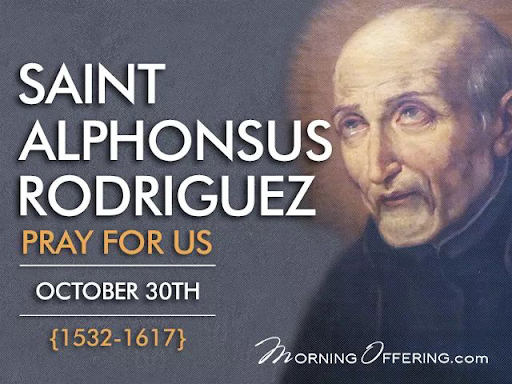

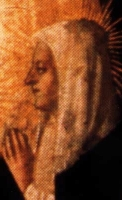
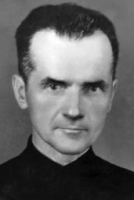


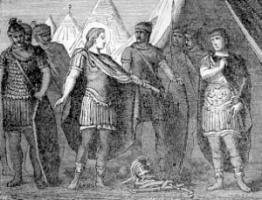




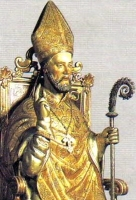

No comments:
Post a Comment